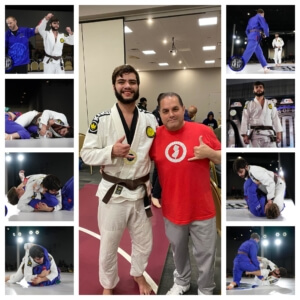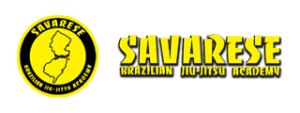Best BJJ training is sparring tired
Dictating pace in Jiu-Jitsu is one of the keys to success on the mat. Whatever your opponent wants to do – do the opposite: BJJ can seem like a very complex game at times, but in some ways it is very simple. It is a classic zero-sum game in the sense what ever is good for one player is by definition bad for the other. If you know what the other guy need in order to perform a given move, you can do pretty damn well by doing the opposite of what he needs. That’s why learning how to attack with a given move often educates you very well in how to defend it, and learning to defend it often makes you better at attacking with it. Whenever you drill a given move, get a feel of what the three main mechanical requirements for its success are – that will give a good insight into what you must do to stop it being used successfully against you in the future.
Whatever the other fellow wants – do the opposite: BJJ can seem like a very complex game at times, but in some ways it is very simple. It is a classic zero-sum game; what ever is good for one player is by definition bad for the other. If you know what the other guy need in order to perform a given move, you can do pretty damn well by doing the opposite of what he needs. That’s why learning how to attack with a given move often educates you very well in how to defend it, and learning to defend it often makes you better at attacking with it. Whenever you drill a given move, get a feel of what the three main mechanical requirements for its success are – that will give a good insight into what you must do to stop it being used successfully against you in the future.
How to improve while injured in BJJ has an easy answer-watch class. It really is that simple. Watching BJJ class: Whenever my students are injured, I usually encourage them to come in periodically and watch classes from the sideline. Why? When you can’t train your body – train your MIND. Remember always that the mind governs our actions. You want a faster game in JiuJitsu? That will require a mind that can process options faster just as much as a faster body. The problem is that when most people watch BJJ they FOLLOW the action rather than try to JUDGE and ANTICIPATE the action. They look only at the RESULT rather than the PROCESSES that brought about the results. When you watch, picture yourself out there and ask yourself second by second what you would be doing in their stead. How you would respond to other fellows attacks and defenses. Get engaged when you watch. The mental workout is every bit as useful and productive as the physical one the athletes on the mat are having.
Something we have really been stressing lately at Savarese BJJ is defense first in BJJ. How good are you at getting out of bad positions? Whenever people ask me to diagnose their skill level one of the first things I observe is their skill at getting out of bad positions. Why? Because that will tell me not only how good they are DEFENSIVELY but also OFFENSIVELY. This might strike you as strange. How can defensive skill reflect your offensive skill? Simple – the more faith you have in your defense the more risks you will take with your offense. Your success will always be determined by the amount of risk you are willing to subject yourself to. As they say – NOTHING RISKED, NOTHING GAINED. If you won’t take the risk associated with offense you’ll never even begin an attack. If you’re afraid that when you try to attack you may be open to positional counters that leave you pinned in holds from which you can’t escape – then you won’t take the risk of attacking. The only thing that will liberate you from those fears that hold you back is the belief that you can escape any hold. The moment you believe that you will attack and hold nothing back.
Back control mastery in BJJ can be tricky. it can also take a while to learn. When you’re starting on the path to back control mastery – focus on the upper body first: The back is the most dominant position in a grappling match without striking. Nothing else creates such a mismatch between the control and submission opportunities of the attacker vs the defender. The SCORE comes from the legs – getting your two legs hooked into an opponents hips is what creates the score. However, the real world control comes from maintaining chest to back connection with or without the legs. When you first begin the back game – focus on the upper body connection first and foremost. You can always get the hooks in later to score. Use your arms in seatbelt or double under control to form a tight initial connection and create a strangle threat. As you get more advanced you’ll find there are ways you can get legs in first without conventional upper body connection but they aren’t the best place to start since you’ll be using those far less than conventional methods. Some of the worlds best use a safety first upper body connection to secure themselves in a winning position, knowing that once this is done, getting the legs in later will be relatively easy
BJJ, like a fight, isn’t always fair. Life isn’t fair – neither should be your Jiu-Jitsu: Fair play is a wonderful thing but not in Jiu-Jitsu. Your whole game is to create an uneven playing field using mechanics and tactics that put your opponent at a disadvantage that makes your victory very likely. One of the best ways to begin doing this is to trap opponents arms. One of the quickest ways to render a human helpless is to pin his arms – that’s why the first thing police officers do with unruly suspects is handcuff them. It’s a simple way of making dangerous people harmless. So too when you do it it in BJJ. If you can trap an arm and pin it down you can render a strong opponent helpless. Our favorite time to do this is when you’re behind someone. It makes the task of strangulation so much easier. Don’t be satisfied with the rear mount – go further and trap an arm whenever possible (and if you know what your doing it usually is possible ). Defending your neck is difficult enough with two hands – with only one (the other one trapped) is VERY difficult indeed. Make a serious study of UNFAIRNESS and you will have advanced your understanding of the true nature of Jiu-Jitsu
Hands and head: When you first make contact with an opponent whether it be standing or from seated guard situations, the first points of contact with your opponent will typically be at the hands and forehead. Learning to place them so as to create defensive barriers and then manipulate them to create offensive opportunities is a big part of your opening gambits in Jiu-Jitsu. Understanding your head/hand attacks in BJJ is vital. Always understand that your head and hands have both defensive and offensive value – but that in most cases it’s tactically smart to take care of your defensive responsibilities before your offensive ones. Your head and hands are both a barrier and a key to your opponents door that can give you access to everything else. Use them wisely from the start of each engagement and you will stop an opponent in his tracks whilst setting up your own attacks
Protecting the chin in BJJ is vital to defensive soundness. Defensive soundness: I’m sure you’ve all been to a boxing match and heard fools in the audience randomly screaming “KEEP YOUR HANDS UP!†every twenty seconds regardless of what is actually happening in the ring. Well, underneath it all there is some wisdom. Boxer keep the hands up in order to cover the chin and make it less accessible to a blow. Observation will quickly reveal good boxers don’t always keep their hands up, but they do whenever they NEED to to. Grapplers too need to protect and cover their chin when they need to – but for different reasons. We don’t need to worry about a blow to the chin, but rather a hand/wrist sliding under the chin to set a stranglehold. As such there is a need for us also to keep our hands up as a block when appropriate to catch not punches to the jaw, but strangles UNDER the jaw. Learn to keep your hand up and ready to block – just like a good boxer you don’t want your hands always in defensive mode – otherwise it can stifle your offense a little – but when it’s needed it BADLY needed – so get those defensive hands up and ready to save you
Savarese BJJ Academy student Leo Alves shined at the Men Of War show on saturday June 4th. The Savarese brownbelt defeated Almir Muratovic of Unity BJJ by unanimous decision.

The greatest compliments we could ever receive are the kind words you share with others.
